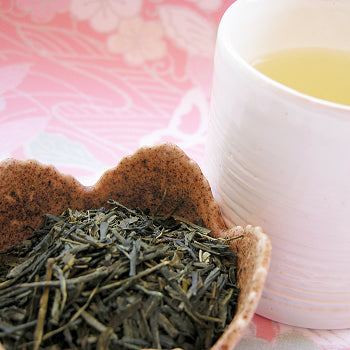Why is My Green Tea not Green?
Posted by BEV A

So let’s get onto this probably most-talked-about tea: green tea.
If you think green tea is green tea, then you will be surprised by the range of flavours you find in the world of green tea. Green tea is unfermented and there are two main green tea producers in the world: China and Japan. Many other countries are catching onto the green tea health bandwagon and producing green tea. Let’s explore the main categories of green tea:

CHINESE GREEN TEA:
This is the type of green tea that does not typically yield a green infusion. If you have been to Yum Cha and are served Jasmine tea (usually if you don’t ask for a specific type of tea, they serve you Jasmine Green Tea), you would notice the colour of the tea is sort of in a honey-hue (sometimes with a hint of green). Jasmine tea is a green tea, believe it or not. Other Chinese green tea includes Long Ching (top photo), Yua Hua and Mao Feng. Chinese green tea is typically dried with the wok drying method, hence the slightly “roasty” undertone.

JAPANESE GREEN TEA:
If you are trying to find a green green tea, search no more. Japanese green tea yields a green infusion (ranging from honey colour with a green tint to unarguably green) and smells of grass. The most common Japanese green tea is Sencha. Sencha has a green tint if it comes from Japan. If you have a Sencha at home and its brew is more of a honey colour than green and you don’t think of rolling on a grass field when you drink it, then chances are it comes from China. Matcha is a powder made from young green tea tea leaves and its infusion is surely green through and through. Japanese green tea is often dried by the steaming or hot air method, so the leaves remain grassy tasting.
ANY OTHERS?
Taiwanese green tea: Taiwan, formerly known as Formosa, is the land of Oolong tea. You might have seen on from some tea suppliers an oolong tea called ‘Formosa green tea’. Possible explanation for such confusion is that in Chinese tea categorisation, oolong belongs to the ‘light green’ tea category. In some cases, people have dropped off the word ‘light’ and just call it green tea. Formosa green tea is lightly fermented like other oolong and does yield a golden-light green infusion. Its 2nd and 3rd infusion tastes the best.
Taiwan does produce a small quantity of green tea. Because some oolong tea has such little fermentation, it is categorised as green tea.
You might have also seen Indian green tea. It is not very common and we have found its taste and infusion colour not dissimilar to its black tea cousin. Kenya also produces green tea…typically strong taste.
What about health benefits and caffeine?
Green tea probably is the most researched tea category and you can find lots about the health benefits (such as fighting cancer cells, weight management, boosting immune system etc) associating with drinking green tea.
Check out articles we have collected relating health issues on drinking tea in the “Is Tea Good for You” section in this site – a lot of them mention green tea.

AUSTRALIA'S FINEST LOOSE LEAF TEAS
Explore Australia's largest selection of Premium Teas & All-Natural Organic Herbal Blends.


